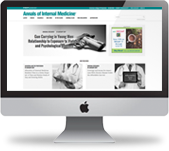The National Health Service Corps: Superheroes in scrubs
Created in 1972, the National Health Service Corps is a federal program that aims to improve access to primary care health services in under-resourced areas by placing skilled professionals in these communities.
In a small community somewhere in America, there lives a superhero who works tirelessly to save lives and serve the needs of her community. By day and by night, she harnesses her extraordinary power: the ability to listen, to diagnose and repair broken bodies and souls, to prevent disease and ease pain. Her empathy is her superpower, and her ability to listen to patients' stories, identify with their lives, and empower them to embrace wellness are her weapons. She is a member of a special force of superheroes, the National Health Service Corps.
Created in 1972, the National Health Service Corps (NHSC) is a federal program that aims to improve access to primary care health services in under-resourced areas by placing skilled professionals in these communities. The focus was to address health care disparities in rural, urban, and tribal areas officially designated as health professional shortage areas (HPSAs).
The program offers a variety of support options for health care professionals and trainees in exchange for a service commitment. These include loan repayment programs of up to $100,000 or more for physicians, nurse practitioners, and behavioral health specialists; scholarship support programs for students in eligible training programs; and the Students to Service (S2S) loan repayment program for medical and dental students in their final years of training. After training has been completed, the NHSC assists trainees in transitioning into practice in underserved areas by matching their interests with community needs.
There are currently more than 18,000 primary care clinicians providing culturally competent and effective care to over 23 million patients at over 21,000 NHSC-approved health care sites in urban, rural, and frontier areas of the country. However, despite the high-value return on investment, the NHSC has historically faced challenges, the biggest of which is funding. The NHSC relies on federal appropriations, which can vary based on political and economic changes, and the program has remained chronically underfunded relative to need. In addition, the need for annual reauthorization and appropriation creates uncertainty in this and other federal programs that address health care needs in underserved areas.
The demand for health care practitioners continues to outstrip supply in HPSAs despite the impact of the NHSC and other programs. Nationwide, the Association of American Medical Colleges estimates that there will be a shortage of 17,800 to 48,000 primary care physicians by 2034, a statistic that is likely to disproportionately impact already underserved communities. ACP and the National Academies of Sciences, Engineering, and Medicine continually advocate for legislation and programs that strengthen the health care workforce, including the NHSC, which faces recruitment and retention challenges because many practitioners leave HPSAs as soon as their service commitments end.
Additional challenges for the program include the administrative complexity involved in applying and entering, which makes it cumbersome and sometimes frustrating for prospective participants. Also, there are often geographic and specialty imbalances, a mismatch of skills versus need, and acute and often unfilled shortages in certain skillsets such as behavioral health.
Many states have enacted programs similar to the NHSC, providing educational support and other incentives in exchange for a service commitment. In my home state, the Kansas Medical Student Loan (KMSL) program has enabled many rural communities to recruit and retain health care professionals in internal medicine, family medicine, psychiatry, and geriatrics, as well as maintain primary and behavioral health services that would not otherwise have been accessible. Like the NHSC, the KMSL program faces funding constraints despite overwhelming enthusiasm by applicants, particularly in the primary care disciplines, and newly approved maternal/child health programs.
There is, however, significant promise for these programs. In Kansas, the legislature recently approved funding for additional loan forgiveness contracts for trainees going into maternal/child health services. At the national level, federal initiatives such as the American Rescue Plan have boosted NHSC funding to directly support more health care professionals and increase collaborations with community health centers, tribal organizations, and academic institutions. Shoring up the financial basis of these programs can create long-term incentives such as extended or full loan repayment, further training or career development, and leadership training, which can prepare and enable practitioners to find satisfying careers in underserved areas.
As the current legislative calendar draws to a close, the NHSC faces a funding cliff due to the expiration of its mandatory funding at the end of the 2024 calendar year. ACP has urged legislators to appropriate at least $350 million for the NHSC in FY 2025 to maintain and shore up its essential programs and to continue to support the 18,000-plus “superheroes in scrubs” who form the vanguard of care for many of our least privileged citizens.
As we welcome a new administration to Washington, D.C., I will be audacious and ask them to go further and support permanent allocations to the NHSC that are geared to meeting actual needs of underserved communities, cost of living, inflation, and population dynamics, as well as a move away from the fragile and politically fraught annual funding allocation mechanism. Such a permanent allocation would encourage more health care professionals to join the corps and enable our heroes in scrubs to continue to use their superpowers as they should without concern for funding cliffs: saving lives, one community at a time.




